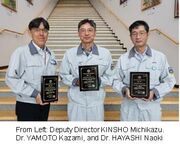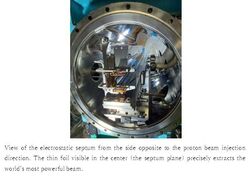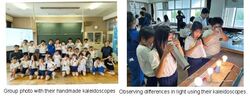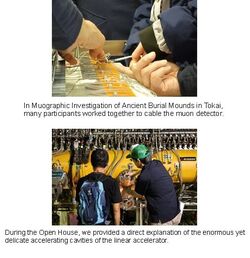J-PARC News September 2025 (Issue#245)
■J-PARC & Nuclear Science Research Institute Open House 2025 - Exploring Tomorrow’s World Through Science - (August 23)
This summer was particularly hot, and the day of the Open House was no exception. This year’s Open House was held jointly with the Nuclear Science Research Institute, attracting a total of 1,648 visitors. We sincerely thank everyone who visited despite the heat.
In the J-PARC area, we opened our accelerator and experimental facilities for public tours and hosted the J-PARC Hello Science event. We also featured a special MLF exhibition, “Ancient Knowledge and Modern Knowledge — Japanese Sword × MLF × Automobile,” along with many other displays and hands-on craft activities.
For future Open House events, we will carefully consider the valuable feedback received through your questionnaires to meet your expectations as much as possible. We look forward to welcoming many of you again next year.
 |
 |
 |
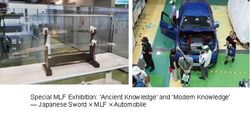 |
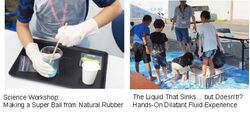 |
 |
 |
■Awards
Received the 2024 Atomic Energy Society of Japan Paper Award (September 11, Kitakyushu-City)
We are pleased to announce that three J-PARC members—Dr. YAMAMOTO Kazami of the Accelerator Division, Deputy Director Dr. KINSHO Michikazu, and Dr. HAYASHI Naoki of the Administration and Operations Support Division—received the Paper Award from the Atomic Energy Society of Japan for their paper entitled “Design and Actual Performance of the J-PARC 3 GeV Rapid Cycling Synchrotron for High-Intensity Operation.” The paper summarizes the design and improvements that enabled 1 MW beam acceleration in the RCS. It was recognized for its significant contribution to cutting-edge research by supplying a 1 MW proton beam to both the Materials and Life Science Experimental Facility and the Main Ring Synchrotron.
■Press Release
J-PARC Accelerator Achieves World Record Beam Intensity in Slow Extraction Operation
— A Powerful Driving Force for Precision Measurements of “Exotic Nuclei” and Other Particle and Nuclear Physics Research — (September 11)
At J-PARC, the extraction of the proton beam from the Main Ring (MR) to the Hadron Experimental Facility employs a technique known as “slow extraction”, in which accelerated protons are gradually extracted over about two seconds to make efficient use of secondary particles produced in the facility.
However, during slow extraction, beam loss occurs when the beam is intercepted by the septum of the electrostatic septum device. To reduce this loss, we developed an ultra-thin electrostatic septum. In addition, by introducing a dynamic bump that changes the beam orbit during extraction, we achieved an extraction efficiency of 99.5%. Furthermore, by installing a diffuser upstream of the electrostatic septum, the efficiency improved to 99.65%.
Another major challenge in slow extraction is maintaining a uniform beam intensity during the extraction period. To address this, we implemented real-time spill control to shape the time structure of the beam and reduce spike structures, as well as a technique called transverse RF, which applies a transverse high-frequency electric field to the beam. These measures successfully achieved uniform beam intensity.
While working to increase beam intensity maintaining high extraction efficiency, we encountered beam instability in a process called debunching for a continuous beam, which resulted in beam loss around the entire MR and caused a failure. By implementing measures to suppress this instability, we gradually increased the beam intensity.
As a result of these various adjustments, since April 30, experiments have been possible with a beam intensity of 81 trillion protons per acceleration cycle. This sets a world record for proton beam intensity in slow extraction, surpassing the previous record held by Brookhaven National Laboratory in the United States. We aim to further increase beam intensity based on the knowledge accumulated so far and newly proposed techniques.
For more details (Japanese only): J-PARC Website:
https://www.j-parc.jp/c/press-release/2025/09/11001611.html
■J-PARC Outreach Lectures
Nakamachi Elementary School, Hitachi City (September 9)
A science class titled “Waves and Particles: What Is the Universe Made of? — Light” was held for 27 third- and fourth-grade children, with Mr. ITABA Tatsunori and Dr. SAWADA Shinya from the Hadron Section serving as instructors.
Mr. ITABA gave a lecture, engaging the children with questions while teaching them about the properties of waves and light. Afterward, together with Dr. SAWADA, the children created their own kaleidoscopes of light. When they pointed their handmade kaleidoscopes toward a light source and saw the rainbow colors appear, the room was filled with excitement.
■J-PARC Sanpo-michi :Experiences Offered by J-PARC
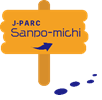 In recent years, the link between childhood experiences and later physical and mental development has drawn increasing attention. Activities such as visiting the sea or mountains on holidays or playing in the park with friends after school are said to play an essential role in shaping a person’s character, alongside the academic knowledge learned at school.
In recent years, the link between childhood experiences and later physical and mental development has drawn increasing attention. Activities such as visiting the sea or mountains on holidays or playing in the park with friends after school are said to play an essential role in shaping a person’s character, alongside the academic knowledge learned at school.
Today, the internet gives us instant access to information and lets us find answers with a quick search. However, this is only part of the knowledge we truly internalize. Real understanding often comes from direct, hands-on experiences.
During our Open House, many visitors walked through the accelerator and experimental facilities, experiencing their impressive scale firsthand. You may have seen and touched various devices and exhibits, gaining a renewed sense of their complexity. At the Japanese sword display, some of you were likely captivated by the quiet shimmer of the blade pattern as it reflected the light. In our outreach classes, children skillfully crafted intricate kaleidoscopes of light. At the “Muographic Investigation of Ancient Burial Mounds in Tokai,” elementary, junior high, and high school students worked together to connect hundreds of cables on a single panel, completing a large-scale detector. Through lectures and J-PARC Hello Science sessions, we created opportunities for visitors to share their curiosity and questions directly with researchers.
Experiential activities are said to foster fundamental abilities essential for life in society—communication, independence, initiative, cooperation, creativity, adaptability, responsibility, and the ability to work with people from different backgrounds. Such experiences are considered indispensable for developing these qualities.
The primary goal of J-PARC’s outreach activities is to spark interest in science and in the research conducted at J-PARC. At the same time, through the experiences we offer, we hope—even in a small way—to contribute to the growth of those who will shape the future.

